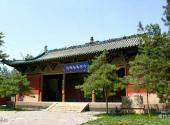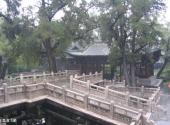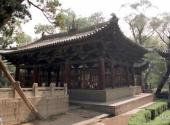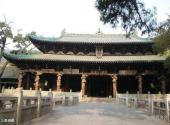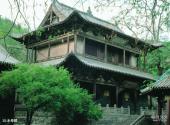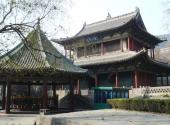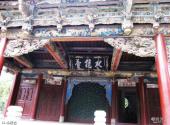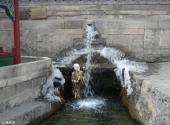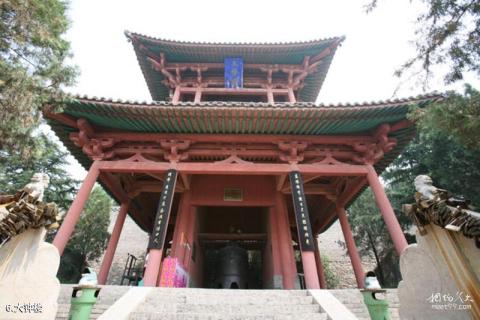
Scenic spot introduction:
Jin Temple is the ancient temple of Jin kings and was first built in the Northern Wei Dynasty. The palaces, pavilions, pavilions, bridges and trees in the scenic area set off each other. Surrounded by mountains and rivers, with a collection of cultural relics and towering ancient trees, it is a very beautiful ancient garden. It is known as the "Little Jiangnan" of Shanxi. It is a rare large-scale ancestral-style classical garden in the country and is well-known at home and abroad. Jinci Temple is located at the foothills of Xuanweng Mountain, 25 kilometers southwest of Taiyuan City. It is one of the national key cultural relics protection units and has high historical, scientific and artistic value.Jin Temple, originally named Tang Shuyu Temple, was built to commemorate Tang Shuyu, the founding prince of the Jin Kingdom. Because of his efforts, the place had good weather. After Shu Yu's death, in order to commemorate him, his descendants chose this beautiful place surrounded by mountains and rivers to build an ancestral hall to honor him and named it "Tang Shu Yu Ancestral Hall".
There are dozens of ancient buildings in the temple, with an elegant and comfortable environment, beautiful scenery, and strong Han cultural characteristics. It is famous for its majestic buildings and superb sculpture art. Jinci is the only and precious historical and cultural heritage that integrates ancient Chinese sacrificial buildings, gardens, sculptures, murals, and inscriptions. It is also the world's center for architecture, gardens, and sculpture art.
Attractions distribution:
The buildings on the central axis of the temple area, from east to west, are: Shuijingtai, Huixian Bridge, Jinrentai, Duiyue Square, the second floor of bells and drums, Xian Hall, Yunuma Feiliang and Notre Dame Hall. This group of buildings, together with the Tang Shu Yu Temple, Haotian Temple and Wenchang Palace to the north, and the Jellyfish Tower, Nanlao Spring Pavilion and Relic Shengsheng Tower to the south, form the Jin Temple. Among them, the Notre Dame Hall, Yunuma Feiliang built in the Song Dynasty, and the Xian Hall built in the Jin Dynasty were identified as three national treasures by the Ministry of Culture.Scenic spot qualifications:
National 4A-level scenic spots, provincial-level scenic spots, and national key cultural relics protection unitsScenic spot features:
Photography, sightseeing, historical tours, cultural tours, ancestral halls, and monumentsTravel Notes of Travellers:
- Travel guide: The 100 most beautiful scenic spots in China!
- Sea Breeze: Enjoy the trip, three
- Sea Breeze: Enjoy the journey,
- Travel Guide: Taiyuan Free Travel Guide for Two Days 2018
travelling guideline:
Scenic Area Activities:
Jinci Ancient Temple Fair Gathering: the second day of the seventh lunar month
Tour route:
Line A: Publicity Board (overview) → Shuijing Terrace → Zhibo Canal → Jinren Terrace → Duiyue Square → Xian Palace → Tang Monument → Tang Shu Yu Temple → Guandi Temple → Zhou Bai → Yunuma Feiliang → Notre Dame Hall → Nanlao Spring → Jellyfish Tower → Jinxi Academy (Wang’s Ancestral Hall) → Dong Shouping Art Museum
Line B: Publicity Board (Overview) → Water Mirror Terrace → Zhibo Canal → Jinren Terrace → Duiyue Square → Xiandian → Yunuma Feiliang→ Notre Dame Hall→ Zhou Bai→ Tang Shu Yu Temple→ Guandi Temple→ Tang Monument→ Fu Shan Memorial Hall→ Nanlao Spring→ Jellyfish Tower→ Wang Ancestral Hall→ Dong Shouping Art Museum→ Fengsheng Temple Pagoda
Best time to visit:
April-October
Shopping recommendations:
Specialties: Taiyuan jade carvings, Taiyuan antique ironware, etc.
Scenic spot location:
China>Shanxi Province>Taiyuan City>Jinyuan District
How to get there:
From Taiyuan Railway Station, you can take special buses 308, 848, 804, and 856 directly to Jinci; from Taiyuan Wusu Airport, you can reach Jinci in 20 minutes via the expressway.
Scenic area map:
Click to expand the scenic area map
Jinci ticket price:
80 yuan/person in peak season
65 yuan/person in low season
Scenic area opening hours:
8:00-18:00 (April-October), 8:30-17:00 (November-March)

